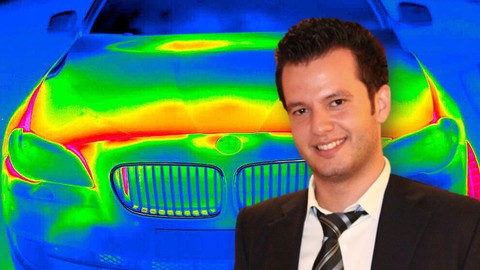
Fundamentals of Heat Transfer Part 1: Conduction
Conduction, Convection, Radiation, Heat Diffusion Eq., Thermal Resistance, Finned Surface, Lumped Capacitance
What you’ll learn
-
Perform general energy balances as well as surface energy balances
-
Understand the basic mechanisms of heat transfer, which are conduction, convection, and radiation, and Fourier’s law of heat conduction, Newton’s law of cooling, and the Stefan– Boltzmann law of radiation
-
Obtain the differential equation of heat conduction in various coordinate systems, and simplify it for steady one-dimensional case
-
Identify the thermal conditions on surfaces, and express them mathematically as boundary and initial conditions
-
Solve one-dimensional heat conduction problems and obtain the temperature distributions within a medium and the heat flux
-
Understand the concept of thermal resistance and its limitations, and develop thermal resistance networks for practical heat conduction problems
-
Solve steady conduction problems that involve multilayer rectangular, cylindrical, or spherical geometries
-
Develop an intuitive understanding of thermal contact resistance, and circumstances under which it may be significant
-
Identify applications in which insulation may actually increase heat transfer
-
Analyze finned surfaces, and assess how efficiently and effectively fins enhance heat transfer
-
Assess when the spatial variation of temperature is negligible, and temperature varies nearly uniformly with time, making the simplified lumped system analysis applicable
Requirements
-
Fundamentals of Fluid Mechanics course.
-
Fundamentals of Engineering Thermodynamics course.
Who this course is for:
- Engineering Students
- Engineers curious about heat transfer



